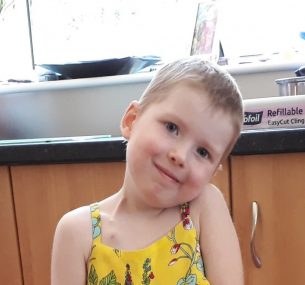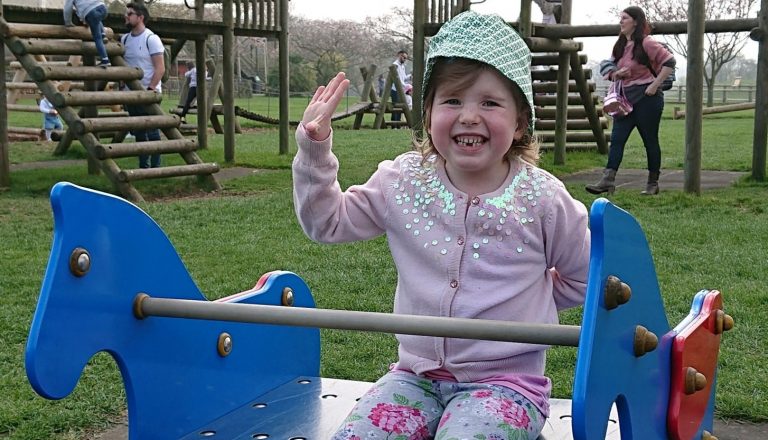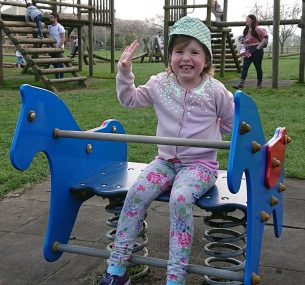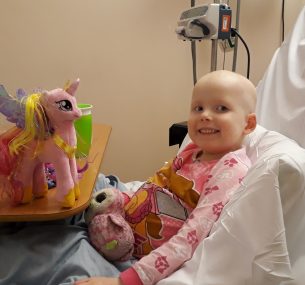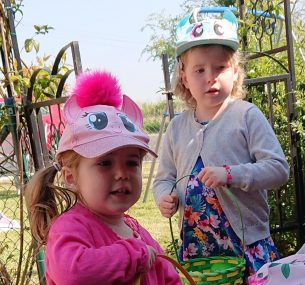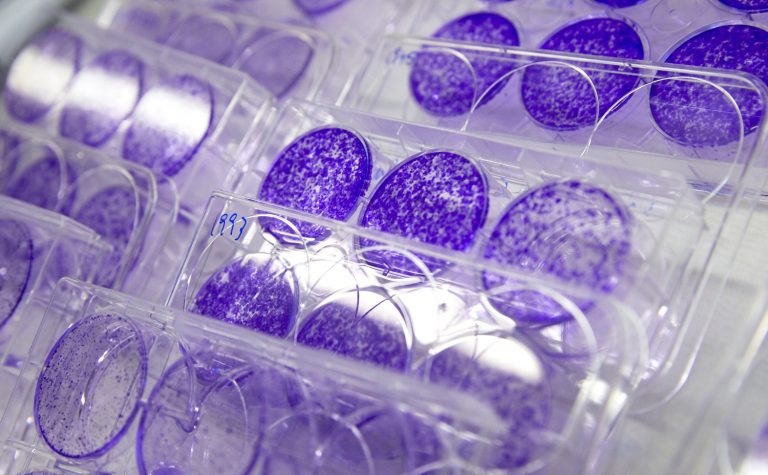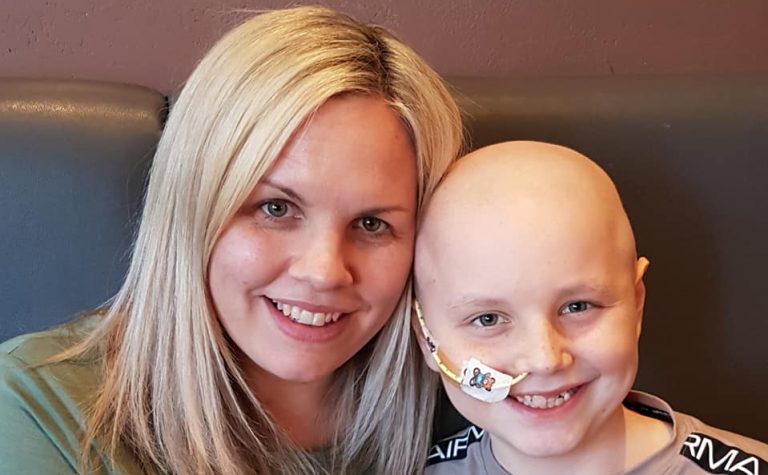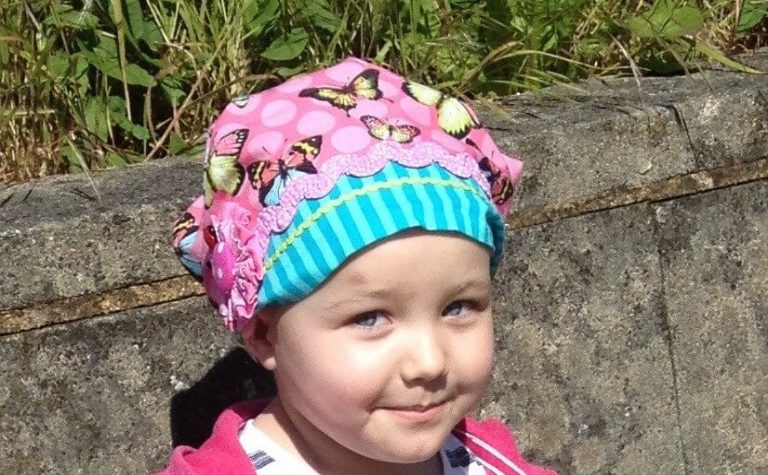Strange sense of relief
Mia was admitted to hospital in Cambridge and I went to stay in hospital with her as we live about 40 miles away. She was given a blood transfusion and platelets initially due to poor blood counts. She was given IV fluids pretty much continuously in an effort to get her as well as possible. I remember that she was connected to a drip for the best part of 10 days.
On the very first afternoon in hospital, we met a specialist who suggested that it might be acute lymphoblastic leukaemia (ALL). It might sound stupid to say but we were actually slightly relieved. We’d read up about leukaemia and were aware that ALL was the most treatable type. The next day, this was confirmed. We actually started to feel slightly more positive as we knew that Mia’s diagnosis had the best long term outlook in terms of survival and hopefully a normal life.
We were then fortunate enough to meet Amanda, our clinical nurse specialist. We were given a treatment plan which is basically a plan of how they’ll get rid of Mia’s leukaemia. We found this really comforting, they knew how to treat her, this works 90% of the time so this should be no different for Mia.
